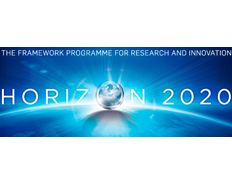Print

Simulating particle acceleration within black hole magnetospheres - SPAWN
Details
Locations:France
Start Date:Sep 1, 2020
End Date:Aug 31, 2025
Contract value: EUR 1,330,322
Sectors: Laboratory & Measurement, Science & Innovation
Description
Programme(s): H2020-EU.1.1. - EXCELLENT SCIENCE - European Research Council (ERC)
Topic(s): ERC-2019-COG - ERC Consolidator Grant
Call for proposal: ERC-2019-COG
Funding Scheme: ERC-COG - Consolidator Grant
Grant agreement ID: 863412
Project description:
Shedding light on black holes
Black holes are involved in extreme astrophysical phenomena, such as particle acceleration. The EU-funded SPAWN project will model black hole magnetospheres using global ab initio particle-in-cell simulations where the fields, particles and radiation evolve in a self-consistent manner. The project will produce the first fully consistent modelling of black hole magnetospheres and will allow for an accurate interpretation of current and upcoming horizon-scale observations of the Galactic Centre and nearby supermassive black holes by the VLTI-Gravity instrument and the Event Horizon Telescope.
Objective:
Black holes are involved in extreme astrophysical phenomena such as accretion, launching of relativistic jets and particle acceleration. The origin of this activity is still poorly understood, but plasma processes within the magnetosphere of the black hole are most likely involved. Thanks to high-performance computing, it is now possible to probe this region. The current state-of-the-art numerical simulations have been focusing on a fluid description of the plasma surrounding black holes. This approach is not sufficient to understand how the plasma is generated and how particles are accelerated near black holes. Here, we propose to model black hole magnetospheres using global ab-initio particle-in-cell simulations where the fields, particles and radiation evolve in a self-consistent manner. Our project will produce the first fully consistent modeling of black hole magnetospheres and allow for an accurate interpretation of current and upcoming horizon-scale observations of the Galactic center and nearby supermassive black holes by the VLTI-Gravity instrument in the infrared and the Event Horizon Telescope in radio. This project will also lead to the prediction of the electromagnetic signal from black-hole neutron star binaries prior to the merger in coincidence with gravitational waves events detected by LIGO-VIRGO instruments.

